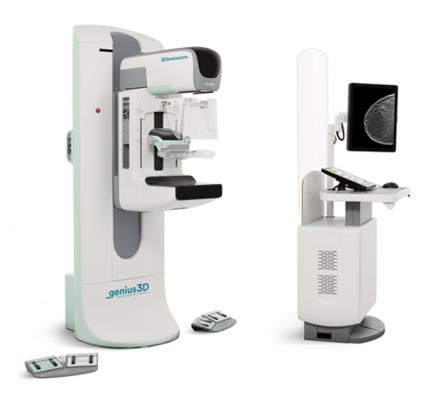
October 1, 2018 — Susan G. Komen founder Nancy G. Brinker and Australian author and Pink Hope founder Krystal Barter will join Hologic in ringing the Nasdaq Opening Bell on October 1 to mark the start of Breast Cancer Awareness Month. The ceremony will be led by Steve MacMillan, Hologic’s chairman, president and CEO. 2018 marks the 13th consecutive year that Hologic has rung the Nasdaq Opening Bell on October 1.
In addition to appearing at the Nasdaq MarketSite, Hologic will recognize Breast Cancer Awareness Month by announcing the results from their recent survey, conducted online by The Harris Poll among over 1,000 U.S. women, designed to highlight the need for education about breast density and the effect it has on breast cancer screening and cancer detection. Most notably, the survey found:
- Sixty-four percent of U.S. women do not know that the density of a woman’s breasts affects her risk of developing breast cancer;
- More than two-thirds of U.S. women (68 percent) do not know their breast density score; and
- Just 36 percent of women have discussed their breast density with a medical professional.1
Grammy award-winning artist, breast cancer survivor and Genius exam spokesperson Sheryl Crow will educate women on this topic throughout the month via traditional, digital and social media.
Hologic’s Genius 3D Mammography exam is, according to the company, the first breast tomosynthesis exam approved by the U.S. Food and Drug Administration (FDA) in 2011. The Genius exam detects 20-65 percent more invasive breast cancers and is the only mammogram approved by the FDA as superior for women with dense breasts compared to 2D alone.2,3 Nearly half of women between the ages of 40 to 74 have dense breasts, which can make it difficult to detect breast cancer during annual screenings.4,5 Density is only identifiable on a mammogram or other imaging modalities, and reflects how much fibrous or glandular tissue is in the breast. Women with dense breasts often require additional imaging, which can result in increased patient anxiety and unnecessary costs. Perhaps most important, women with very dense breasts are four to five times more likely to develop breast cancer than women with less dense breasts.6,7
In the past year, Hologic has introduced a number of new innovations on its 3Dimensions Mammography System that now provides higher resolution 3-D images for radiologists, enhanced workflow for technologists, and a more comfortable mammography experience with low-dose options for patients.
For more information: www.hologic.com
References
- HOLOGIC survey, conducted online by The Harris Poll August 14-16, 2018 among 1,155 U.S. women. This online survey is not based on a probability sample and therefore no estimate of theoretical sampling error can be calculated. For complete survey methodology, including weighting variables and subgroup sample sizes, please contact Jane Mazur.
- Results from Friedewald, SM, et al. "Breast cancer screening using tomosynthesis in combination with digital mammography." JAMA 311.24 (2014): 2499-2507; a multi-site (13), non-randomized, historical control study of 454,000 screening mammograms investigating the initial impact the introduction of the Hologic Selenia® Dimensions® on screening outcomes. Individual results may vary. The study found an average 41% increase and that 1.2 (95% CI: 0.8-1.6) additional invasive breast cancers per 1,000 screening exams were found in women receiving combined 2D FFDM and 3D™ mammograms acquired with the Hologic 3D Mammography™ System versus women receiving 2D FFDM mammograms only.
- FDA submissions P080003, P080003/S001, P080003/S004, P080003/S005.
- Ho JM, Jafferjee N, Covarrubias GM, Ghesani M, Handler B. Dense breasts: a review of reporting legislation and available supplemental screening options. AJR Am J Roentgenol. 203(2):449-56, 2014.
- Sprague BL, Gangnon RE, Burt V, et al. Prevalence of mammographically dense breasts in the United States. J Natl Cancer Inst. 106(10), 2014.
- Boyd NF, Guo H, Martin LJ, et al. Mammographic density and the risk and detection of breast cancer. N Engl J Med. 356(3):227-36, 2007.
- Yaghjyan L, Colditz GA, Collins LC, et al. Mammographic breast density and subsequent risk of breast cancer in postmenopausal women according to tumor characteristics. J Natl Cancer Inst. 103(15):1179-89, 2011.


 December 17, 2025
December 17, 2025 









